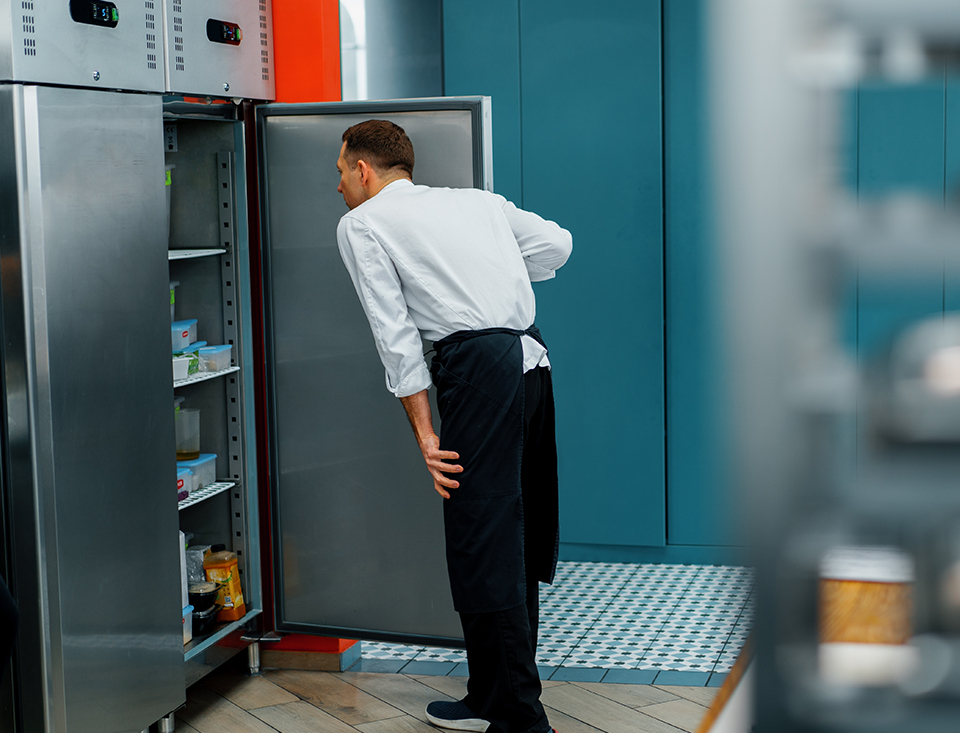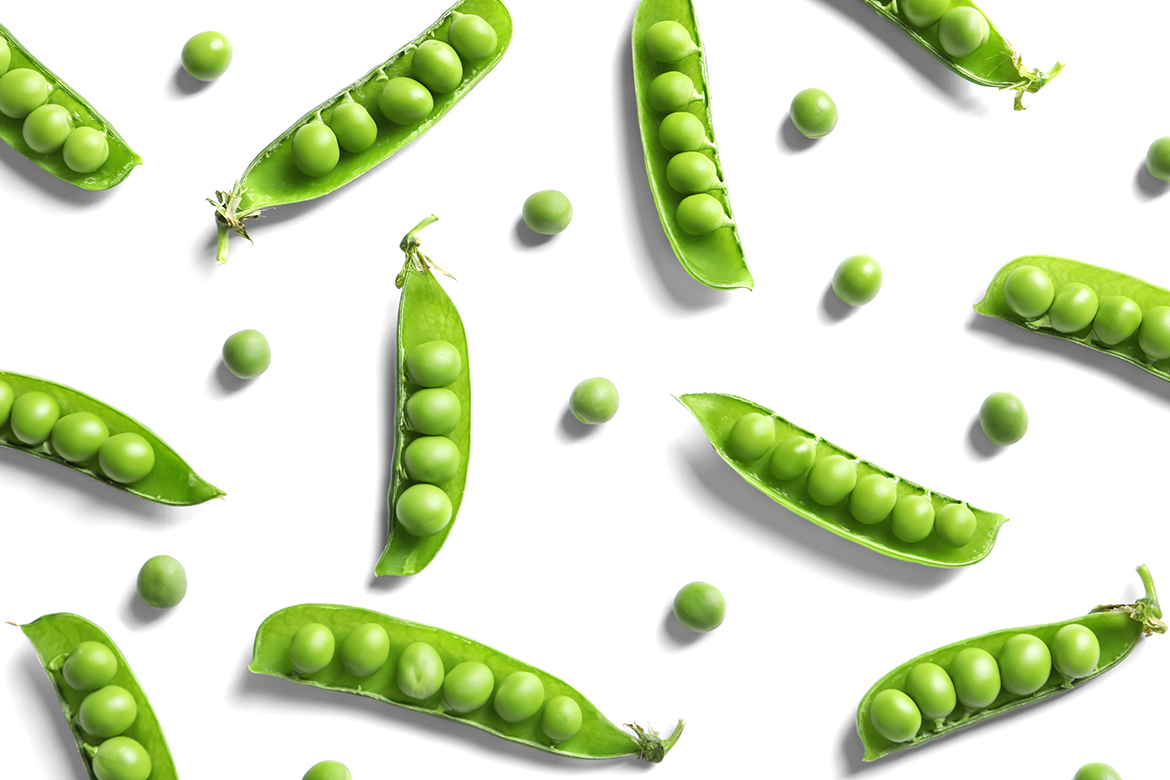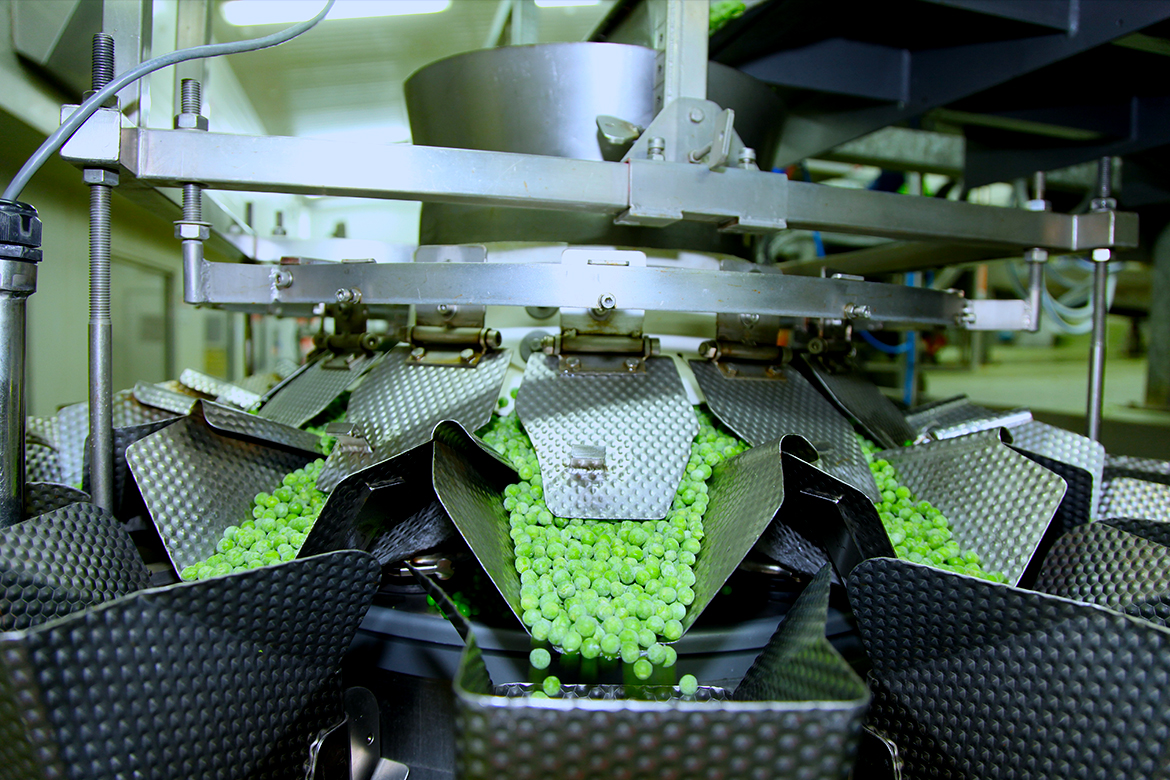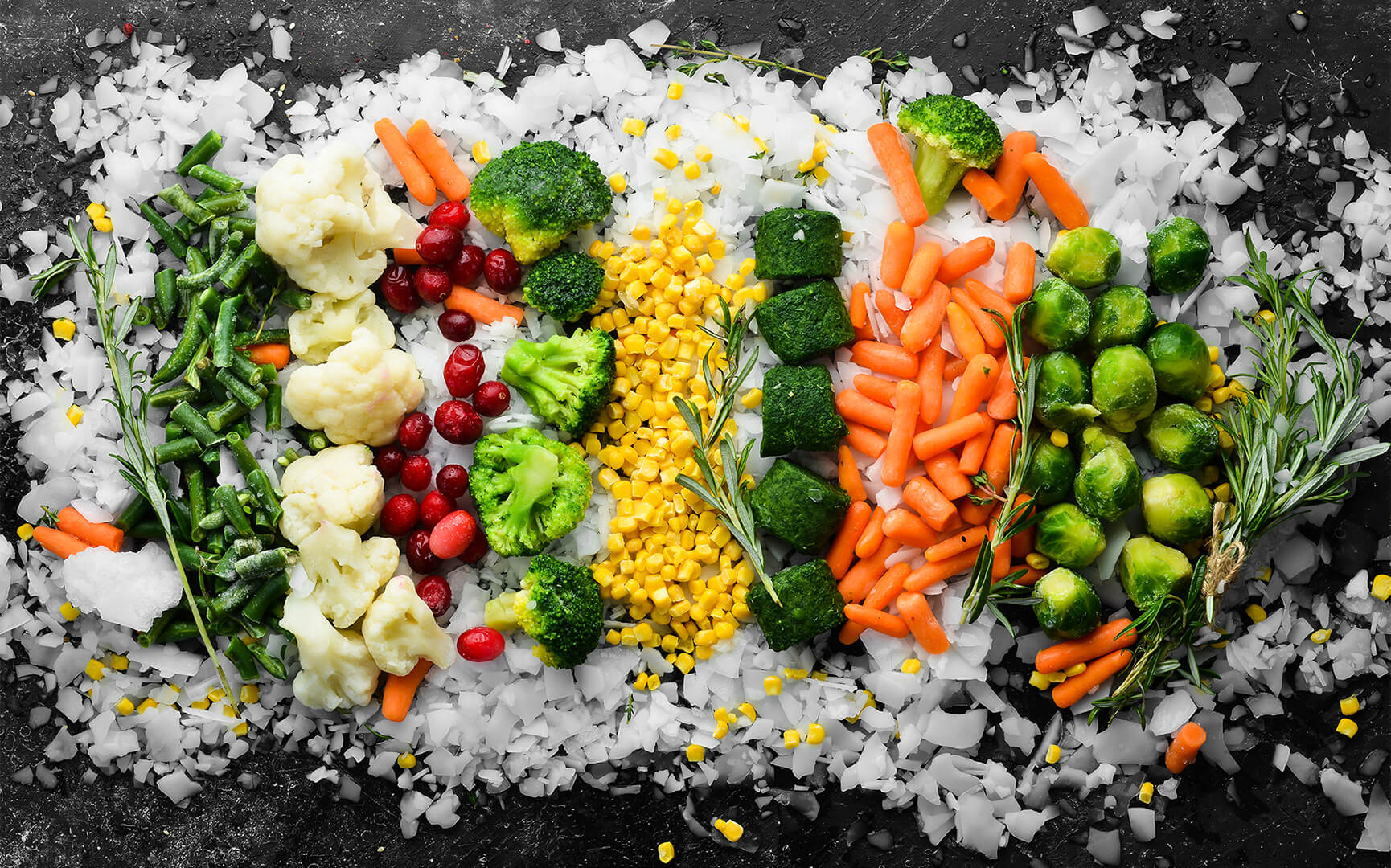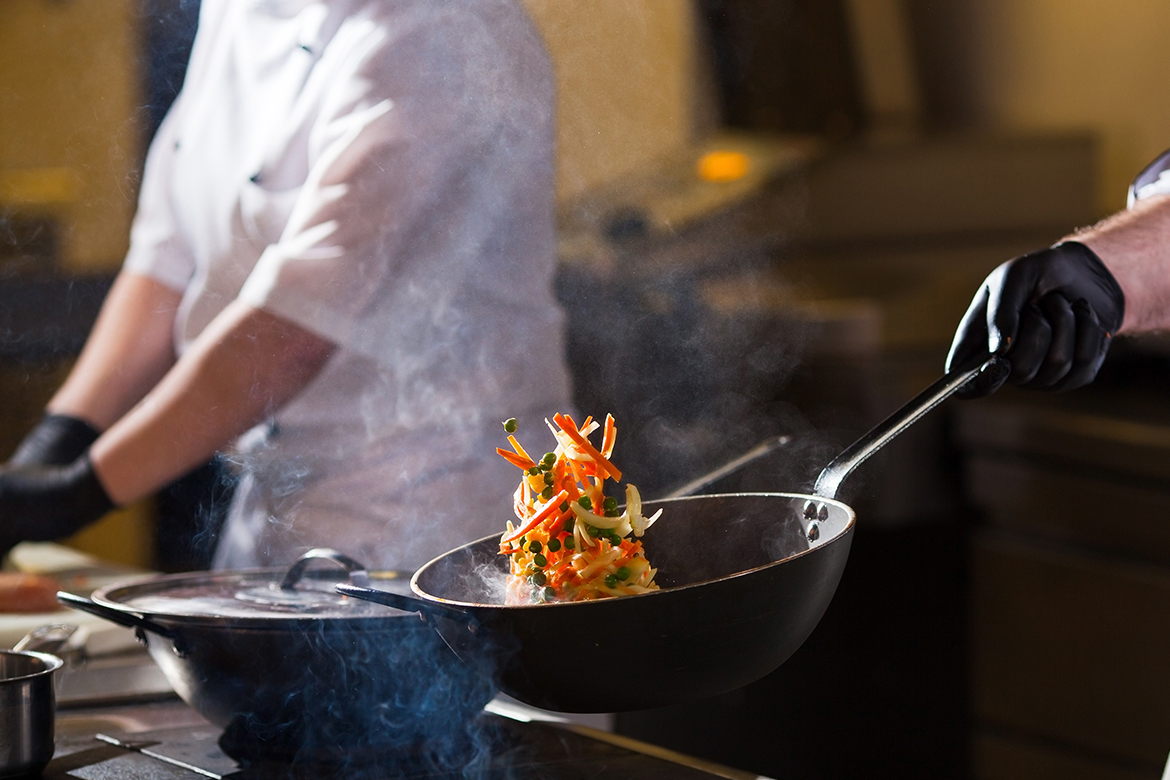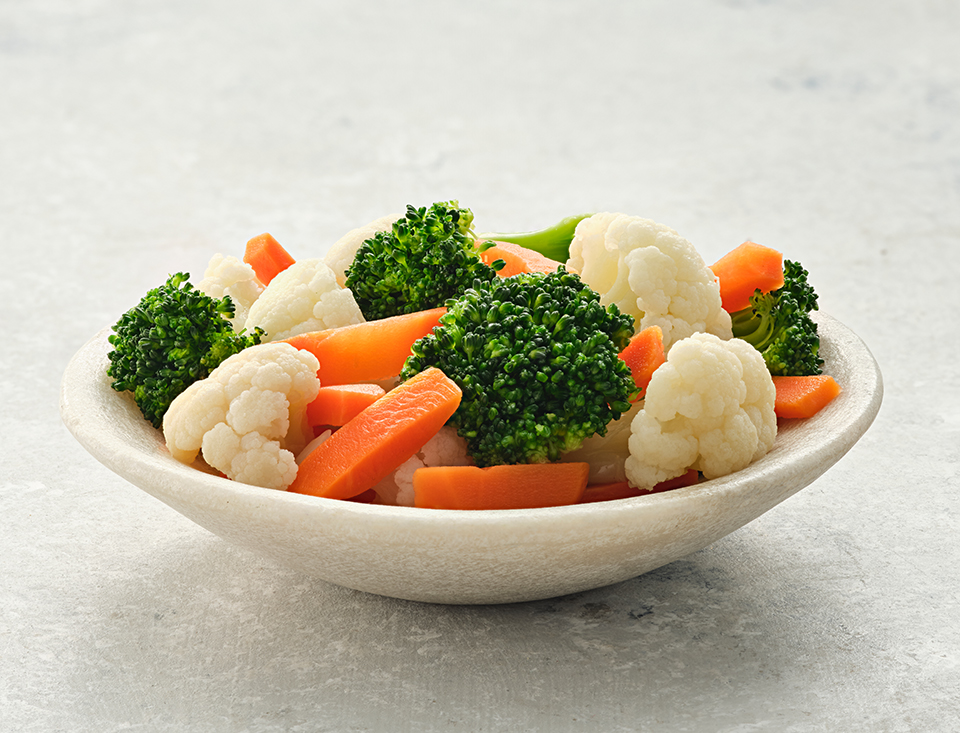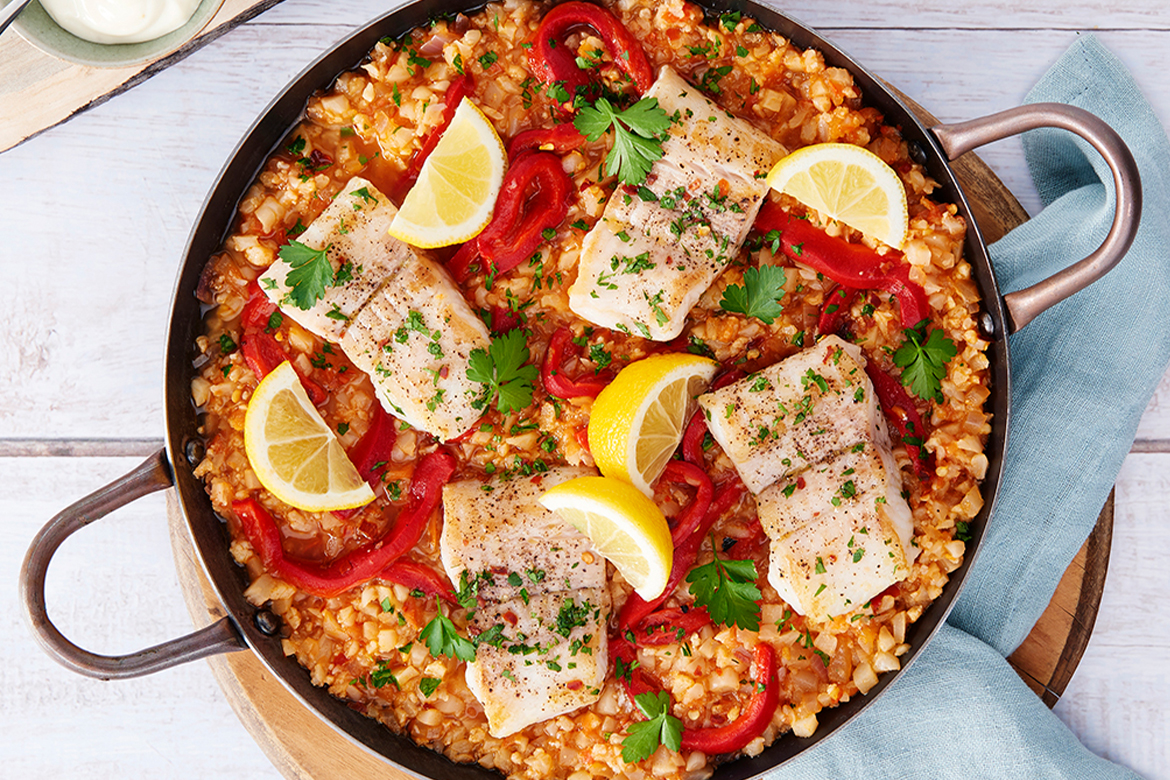Why Frozen Food
IS FABULOUS
Glenn Cartledge
There’s nothing like a worldwide pandemic and an accompanying supply chain crisis to force businesses across the board to find better ways to work. For the local hospitality sector, kitchen efficiencies, waste minimisation and a reliable supply of produce are suddenly top of mind.
Frozen food has surged in popularity
for many venues that previously would not have considered deviating from a fresh food-only approach. But still reservations remain about the integrity of using frozen ingredients.
So, let’s start by breaking down a key misconception about the quality and nutrition value of frozen produce.
Putting frozen food to the test
Most of us have the age-old mantra ‘fresh is best’ ringing in our ears when it comes to considering whether to incorporate frozen produce into our cooking. But less widely known is the fact many items of produce retain most, if not all, of their nutrition properties when snap frozen and, crucially, not overcooked.
Popular examples include garlic, onion, broccoli, cauliflower, carrot and peas. Leafy greens, such as spinach and kale, can even retain more nutrients than fresh varieties when snap frozen shortly after being harvested. That’s because these varieties are easily affected by exposure to light and heat once picked, robbing them of goodness.
A further benefit to frozen ingredients is that they’re picked at their seasonal peaks, which means they’re likely to be in much better condition than out-of-season fresh produce.
Frozen foods can even taste better than some of their fresh equivalents. Peas, for example, have a short lifespan before their taste dulls due to changes in their natural sugar content. On the other hand, frozen peas picked and snap frozen at peak ripeness retain the taste of a freshly harvested pea.
Putting the freeze on waste
So, what of the other benefits to adopting a freezer full of frozen ingredients? For starters, frozen food can help to clamp down on waste.
One in five New Zealand children live in households experiencing moderate to severe food insecurity, while 1.2m Australian kids are constantly hungry. And yet, both countries habitually throw out tonnes of edible food across the length of the supply and consumption chains.
Among many solutions to this dreadful problem is choosing frozen ingredients where possible. The ability of a chef to take an exact portion and return the remainder to the freezer is one simple waste-reduction tool in the armoury of a commercial kitchen.
Unlike fresh food, frozen ingredients can have shelf lives of up to a year.
Making the most of valuable staff hours
Many casual dining venues continue to struggle with labour force issues. Near full employment at the time of writing means this dilemma will be remain for some time yet. For those of us left, the choice is simple: work harder or work smarter.
Simply, we need to use our staff to best advantage. This can mean up-skilling and cross-skilling, so that we get more out of the staff we currently have. Or it means making sure time-consuming jobs are minimised and your kitchen works as efficiently as possible.
Frozen ingredients that are pre-cut and/or pre-prepared, such as broccoli florets, veggie rices and char-grilled capsicum, offer labour savings and a guarantee of consistency for under-skilled kitchens.
“The question chefs need to ask themselves is: what do I really need my kitchen staff to be doing and what can I easily replace with a convenience product?” says Simplot Australia executive chef, David White.
“Frozen and pre-prepared ingredients can offer outstanding menu support. Not only can these products save valuable preparation time, but they can also assist kitchens to provide consistency in taste, texture and presentation,” he adds.
Creating predictable menu pricing
Another significant benefit of frozen ingredients is their stable cost, allowing venues to avoid highly variable market pricing and confidently
create menus that don’t wildly vary in cost
Produce continues to be impacted by local and global issues, meaning price stability, especially for freshly picked and transported food, won’t return anytime soon. Incorporating frozen ingredients into your menu planning will assist with confident costing and should lead to more profitable operations.
Turning convenience into creativity
The speed scratch movement is becoming a popular way to efficiently build dishes and flavours off high quality convenience foods. When used well, speed scratch is a smart platform for creating signature meals with consistency and flair.
“Once chefs get past their snobbery around frozen products, they see the benefits,” says Simplot’s White. “There are quality convenience products out there and you just need to find the ones that work best for you.”

